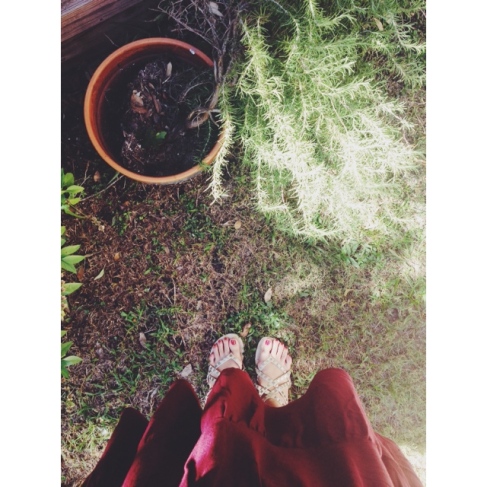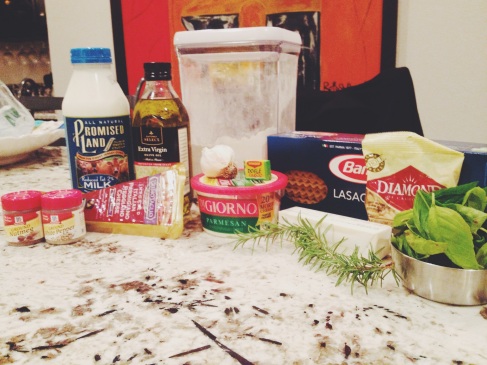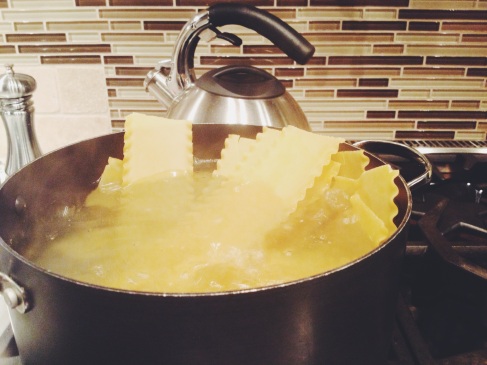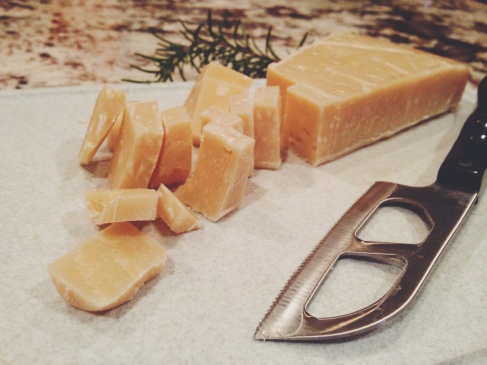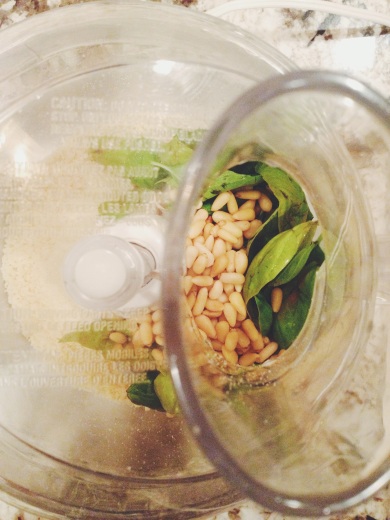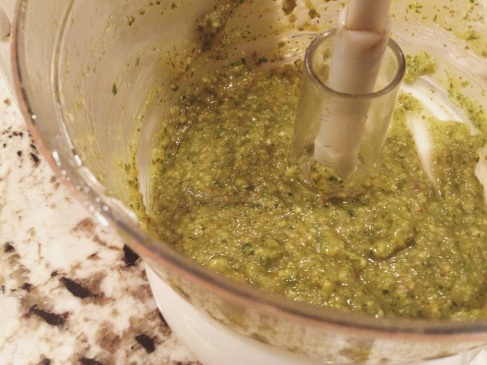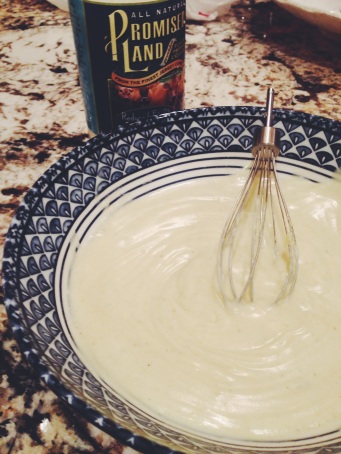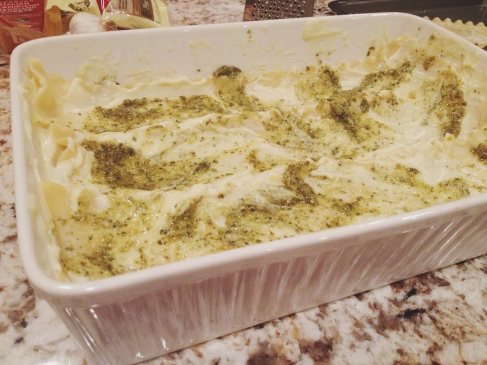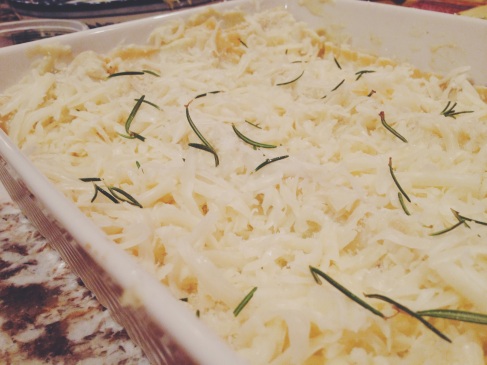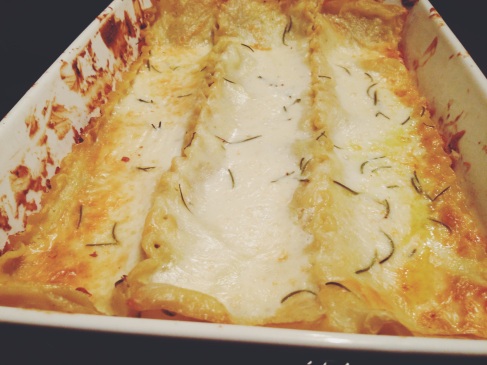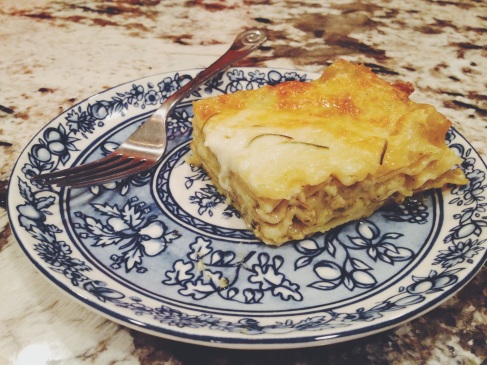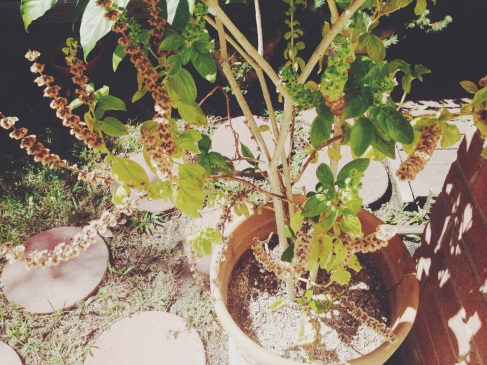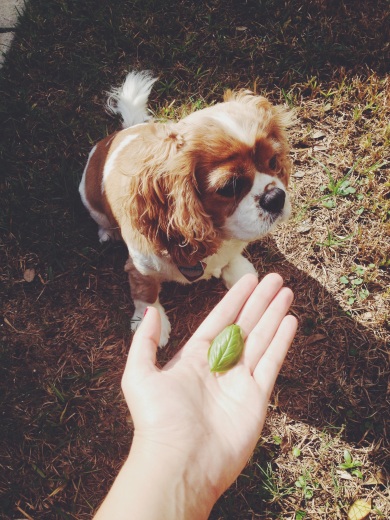First off, lets correct ourselves before we proceed with an irresistible Italian recipe. 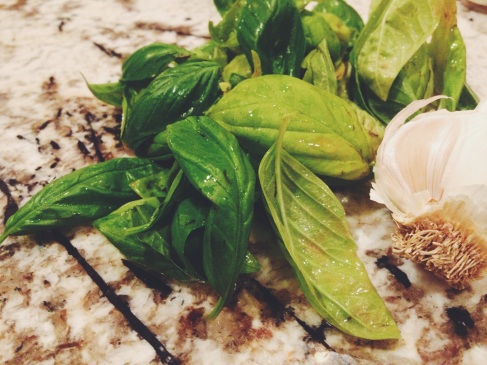
– It is not LASAGNA, with an “a”, but LASAGNE, with an “e” for more than one sheet of pasta. If you only use one sheet of pasta for this recipe, then lasagna away!
– It is also FETTUCINE with an “e”, not an “i”, as most people in the U.S. like to think.
– It is “PANINO” for ONE Italian style sandwich and “PANINI” is for more than one. I always hear people saying “i want a panini”…incorrect, my friends! But, nonetheless, you learn something every day, as we have just now. Refreshing, right?
Today I will show you, my readers, how to make a recipe that I thought required being precise, but it really does not. I say this because I kept adjusting my recipe and improvising as I went along, and as will you I am sure. It is meat free, simple, and full of flavor.
MEAT EATERS: Don’t go away! You will love this, too. Trust me! This also works as a side dish for any meat or fish, so the world is not ending.
Let’s give this a go, shall we?
My rosemary and I
What you need:
15-20 cooked lasagne (sheets of pasta, rememberrrr?)
*you can also use no-boil noodles, but I really don’t think they are as good. I’m not sure if they save you money, but they definitely save you some time.
For the pesto:
1/2 cup of Parmigiano-Reggiano cheese, cut into medium sized-chunks
1 large garlic clove
1/2 cup of pine nuts
1/2 cup of olive oil
2 cups of fresh basil leaves, packed
For the bechamel sauce:
1 1/2 sticks of unsalted butter
3/4 cup of flour
4 cups of milk
1/2 tsp nutmeg
1 tsp ground pepper (I used white, but it really doesn’t matter- use what you have!)
2 cubes of vegetable bouillon
For building your lasagne and topping:
1 1/2 cups of Parmesan cheese, grated
1 – 1 1/2 cups of Mozzerella cheese (you can play with this, I like more cheese!)
Handful of fresh rosemary
And of course, a baking pan! I used a 13 x 9 ceramic one.
How you do it:
1. Preheat your oven to 350 degrees F.
2. Start boiling some water for the lasagne. You need enough to submerge all the pasta you want to cook. Bring to a boil and put in your sheets, and cook for about 8 minutes. Be careful not to overcook your lasagne, because they are going to continue cooking as they bake. Once they are cooked, drain and lay them out flat on a baking sheet or tray so they don’t stick to each other. You can make the pesto while this is all happening!
3. Make the pesto. You need a food processor for this. But hey, be an imaginary chef and use something else, like a blender (Let me know how that goes)! Add the chunks of Parmigiano-Reggiano to the food processor and process it until it is ground very fine. Add the pine nuts, garlic and basil and process in pulses until it is all chopped finely and blended together. Then, with the processor on, add the 1/2 cup of olive oil until the pesto is smooth. If you think it is olive-oily enough, you do not need to use the full 1/2 cup. Use your eyes!!
4. Make the bechamel sauce. This is the most tedious part of the true Italian lasagne making experience, because you have to constantly stir and keep an eye on what is forming in your saucepan. So flex your arm/wrist muscles and get ready. In a medium sized saucepan, add the 1 1/2 sticks of butter and melt. The moment it is all melted, add the flour and whisk for a minute or two until the flour is cooked. KEEP WHISKING. Once it is cooked, add the veggie bouillon cubes. While whisking (I know, I know), add about a third of the milk slowly. Keep whisking, and you will see that the doughy thing that was once there becomes creamy, and then becomes doughy again. Once that happens, add another third of the milk. Whisk until smooth, and then add the rest of the milk. Once your bechamel looks creamy but not runny, take it off the heat and transfer it to a heat-safe bowl and let cool. Make sure you have everything for the assembly ready so the bechamel doesn’t become too stiff. I just kept stirring it occasionally to help prevent that.
Note on the bechamel: If it looks too stiff while still in the sauce pan, add a bit more milk. That is what I did. I don’t know if that is blasphemy in the world of bechamel sauce making, but who’s going to stop me?
5. Assemble the Lasagna. Start off with putting a good amount of bechamel on the bottom, coating it completely. Then add a layer of lasagne (I used 3 for each layer). Coat the layer with bechamel. Add some pesto and spread it into the sauce. Sprinkle a handful of the grated parmesan evenly over the layer. Keep layering the lasagne, bechamel, pesto and parmesan until you add the last layer of pasta. Finish off by coating it with the last of the bechamel only. Add the mozzerella cheese, making sure to coat the entire thing. Add sprinkles of fresh rosemary on top. Wrap the entire thing tightly with foil.
6. Bake the lasagne for one hour. If you used no-boil noodles, you will need to leave it baking for another 15 to 20 minutes. After it bakes, remove the foil and let it bake for another 10-15 minutes. This will make parts of the cheese on top crispy and delicious.
Serve immediately, since there is NOTHING like homemade lasagne fresh out of the oven. I recommend a nice Tuscan red wine with this dish, such as Chianti. Then again, I am biased because I just love Tuscany so much.
What do you think about my recipe? Let me know by commenting below, I would love to hear from my readers! If you have a different approach, or if you tried my recipe and used a blender to make the pesto, tell me about how that went too!
Buon appetito!
My basil plant
Luna likes to ignore me, but i love her.
Keep imagining, Keep cooking.
Erika
